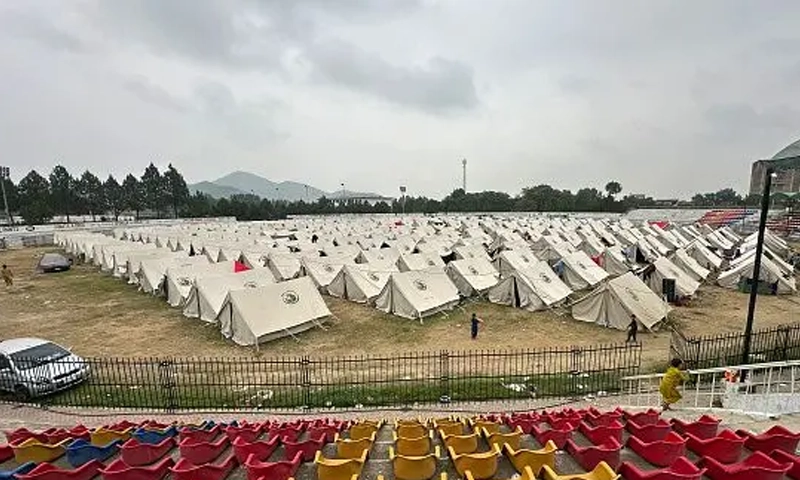- Faqeer Hussain Web Desk
- 9 Hours ago

Three dead in Haripur blaze triggered by windstorm
-
- Web Desk
- May 18, 2025

HARIPUR: Three people, including a child, were burnt to death when a fire broke out in the tents of nomads along the Tarbela Lake due to a windstorm.
Several others, including women and children, sustained burn injuries and had been rushed to hospitals in Haripur, Wah Cantt, and Peshawar for treatment.
According to rescue officials, search efforts are underway for those reported missing in the fire, which also killed 150 livestock belonging to the nomads. Most of the injured are stated to be in a critical condition. Due to the absence of a burn unit in Haripur, the injured had to be transferred to hospitals in other parts of the province.
Police officials said initial investigations suggest that the fire was sparked by a gust while food was being cooked near a heap of wheat, which quickly caught fire and spread to the nearby tents, engulfing them in flames.
WINDSTORM
The tragic incident occurred as a windstorm on Sunday hit upper Khyber Pakhtunkhwa, Potohar and Kashmir.
The much-welcomed change in weather came after a severe heatwave, which had gripped Pakistan earlier this week.
Earlier in the day, temperature in Islamabad had again hit 40 degree Celsius, as mercury in Lahore and other parts of Pakistan remained in high 40s.
Meanwhile, strong winds covered the skies with dust and uprooted many trees, but the weekly holiday meant that the routine life wasn’t much affected by the storm.
However, windstorm and rain was not limited to Islamabad and Rawalpindi, as the weather system affected upper Khyber Pakhtunkhwa and Kashmir too.
Earlier, thunderstorm was first reported in Parachinar and surrounding areas during later afternoon, after which the weather system moved westward.
HEATWAVES
Global warming is easily noticeable in South Asia as well as West Asia. Rising temperatures, less and erratic rains, heatwaves, shortened winter season and other factors mean we need to take emergency measures for tackling the situation.
It means Pakistan and other parts of South Asia are experiencing heatwaves regularly every year. In fact, it has become a norm.
Earlier, Pakistan and other parts of the region experienced very little rain during winter. It translated into less snowfall and thus negative impact on water flow in rivers.
On the other hand, ill-planned urban development has forced to leave millions of people at the mercy of Mother Nature. That’s why urban centres in Pakistan are now experiencing “oven effect” in summers.
When it comes to agriculture, crop pattern must be adapted to the new realities of a world witnessing global warming so that the state can ensure food security for the millions of people.






